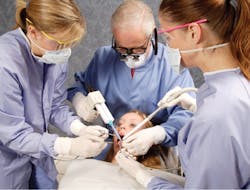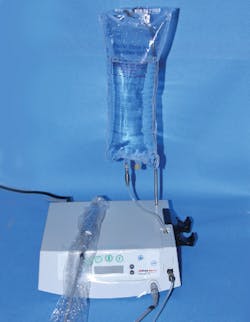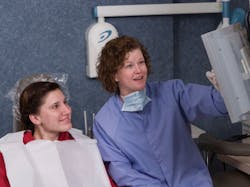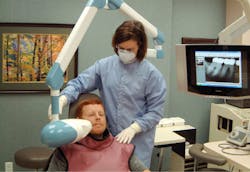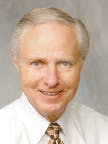Ask Dr. Christensen: Educating staff for practice efficiency
Educating staff for practice efficiency
Ask Dr. Christensen
Q+A
In this monthly feature, Dr. Gordon Christensen addresses the most frequently asked questions from Dental Economics readers. If you would like to submit a question to Dr. Christensen, please send an e-mail to [email protected].
Q
I am concerned about the level of education and clinical skills of some of our new staff members, especially those who have been out of their educational programs only a short time. I would like to upgrade their knowledge and clinical skills. Should I send them to formal CE courses? If so, how do I determine which courses are the most adequate? I have been somewhat discouraged with some CE courses, since many of the courses do not contain much practical information that they can use. I need guidance on how to upgrade these great people.
A
I commend you on your desire to invest in your staff. There are several different ways to accomplish this goal that can be quite successful.
The first step, regardless of whether you are a new or mature practitioner, is to define the characteristics of your ideal practice. Decide on the type of practice you want. Some dentists benefit from working with a practice consultant, and others prefer to make these decisions alone. Every practitioner has different opinions about the areas of dentistry he or she wants to include in the practice, the duties of the office staff, and the type of patient he or she prefers to serve (figure 1).
Figure 1: Competent dental assistants are essential to a productive practice. However, constant improvement of clinical skills is necessary for the entire team. This photo shows six-handed dentistry, which significantly increases practice efficiency.
Identify the areas of dentistry you want to emphasize. It is relatively easy to select the clinical areas you enjoy most and those in which you feel most competent. For example, you may want to blend both restorative dentistry and prosthodontics with implant placement and restoration. If that is your desire, upgrade your clinical skills in those areas with the appropriate continuing education.
After accomplishing the first two steps, decide what clinical responsibilities you would like your staff members to do and begin making a list. Some practitioners prefer to delegate many clinical responsibilities, while others do not. After you figure out which clinical responsibilities you want your staff to accomplish—whether conventional or expanded—then it’s time to decide how to educate your team.
Determine which staff members have an interest in the areas you are planning to emphasize in your practice. Some may have experience or expertise in implant placement, for instance, but their skills may need to be brought up-to-date. Identify the level of knowledge and skills they already have in implant placement, and then upgrade those skills by interviewing the most interested staff member, asking that person to confirm that interest in becoming the team member in charge of all aspects of implant placement procedures for your practice. Then, give this person full responsibility for upgrading his or her skills and making sure your office is competent in this area (figure 2).
Figure 2: A well-educated dental assistant can administer all aspects of implant placement, including being responsible for all equipment and supplies.
The person now in charge of implant placement should determine what needs to be done to become upgraded in the field. Let that person take the responsibility. Don’t ask about needs; let the team member tell you what is needed. It may be a specific course or courses, observation of a dentist or staff of someone in your geographic area, reading, watching a video, or finding information on the internet. The point is, let the team member be the leader of the area you have delegated.
Determine which other areas of your ideal practice you need to assign to other staff members. You may want a leader of complex provisional restorations, laboratory activities, equipment, supplies, etc. By assigning these duties to staff members, you can concentrate on the tasks only a dentist can legally accomplish; the responsibility for other office necessities are the full responsibility of the assigned staff members (figures 3 and 4).
Figure 3: Someone in your office should be the major person in charge of patient education. This person can be either a motivated dental hygienist or dental assistant and can positively influence acceptance of treatment plans.
Figure 4: Who is in charge of radiography in your practice? Someone should have the responsibility for educating the remainder of the office staff and being responsible for all equipment maintenance and repair.
Each of your team members should now have an area of the practice for which they are the primary responsible person. As staff come and go, however, how do you keep their assignments completed to an optimum level?
In-service education/training
One of the best methods to excite and retain fully educated staff is to have periodic team education sessions. These short meetings can be held any time you feel is appropriate. I prefer starting one hour before a given practice day, with 45 minutes for the in-service education session and 15 minutes for the huddle before the patient schedule begins for the day. Topics can be anything that may need enhancement in your practice.
Who is the instructor? The specific designated leaders of the various aspects of your practice should lead the discussions and demonstrations. Having them do the instruction motivates them to upgrade themselves before the meeting and educates your entire team about the topic being discussed. This concept also educates potential members of your staff to take over a specific area should the current leader leave the practice for any reason. This will always ensure an identifiable second level of leadership for each area.
Some practices have many employees and a significant diversity of clinical procedures, while others have only two assistants and a hygienist, which is the national average. In the event of many staff employees, the assignment of responsibilities is easier. In the event of only a few staff members, each has to absorb several major responsibilities.
In my opinion, in-service education is probably the most adequate of all methods to educate team members and to keep them current on skills and knowledge, as well as motivated. However, as you can see, significant organization must be done and delegation must be made to make this concept work efficiently.
On the contrary, in a practice where the dentist is the ultimate authoritative leader, the time involvement and stress on that person is often overwhelming. If assignments are made to team members with full responsibility for their areas of assignment, the dentist is free to do clinical dentistry better and to do more enjoyable preventive and treatment procedures.
Continuing education courses for staff
Hands-on courses are by far the best. They are well-known to be much more valuable than lectures or seminars. Seeking such courses in your geographic area can be a challenge. I suggest that you consult with other dentists in your geographic area at dental meetings or social events. You know the practitioners with obviously successful and efficient practices. Ask them where their staff finds good continuing education for the procedures your staff needs.
Many current courses are too pedantic with little practical information. Persons taking such courses do not obtain enough information or experience to produce behavioral change in your staff. Make sure that the courses your staff attend provide useful information and experience.
On-the-job training
I mentioned earlier the desirability of having a backup person in every area. That person should be watching and assisting the lead person in the specific areas. The backup person should be the one to take over when the lead person is ill or off work for some reason. That person is also the one to take over the lead responsibility if the leader leaves the practice.
Other educational opportunities
There are many other educational ways to increase the competency of your staff. Most of them require personal motivation, organization, and time. Such opportunities are reading journals, attending seminars, searching the web, talking to peers, and obtaining personal clinical experience with the task at hand.
Summary
Educating staff is a relatively easy task, but it requires planning and effort. Most staff members genuinely appreciate having the opportunity to upgrade themselves. In this article, I note the necessity of defining the characteristics you desire in your practice, preparing yourself to attain those characteristics, and assigning specific clinical tasks with full responsibility to educated staff.
Author’s note: Additional educational resources from Practical Clinical Courses, some of which relate directly to this article:
Two-day courses in Utah
• Faster, Easier, Higher Quality Dentistry with Dr. Gordon Christensen on March 2–3, 2018
One-hour videos
• Effective Use of Four- and Six-Handed Dentistry (Item No. V4714)
• Foolproof, Fast Single-Crown Procedure (Item No. V1980)
• Top Insurance Coding Strategies (Item No. V4783)
• Avoiding Common Administrative Errors (Item No. V4784)
For more information about these educational products, please call (800) 223-6569 or visit our website at pccdental.com.
Gordon J. Christensen, DDS, MSD, PhD, is a practicing prosthodontist in Provo, Utah. He is the founder and CEO of Practical Clinical Courses, an international continuing education organization founded in 1981 for dental professionals. Dr. Christensen is cofounder (with his wife, Dr. Rella Christensen) and CEO of Clinicians Report.

